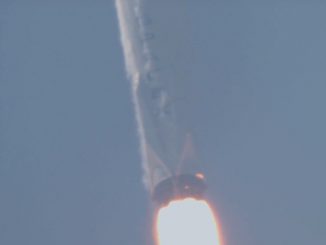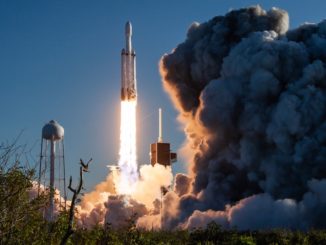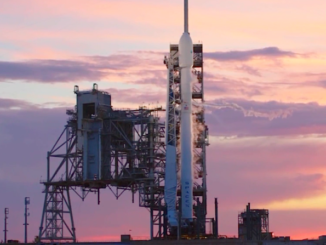
SpaceX launched a batch of Starlink internet satellites from California on Tuesday after four earlier tries were scrubbed. Liftoff of the Starlink 7-11 mission occurred at 4:35 p.m. PST (7:35 p.m. EST, 0035 UTC).
SpaceX’s webcast on the social media service ‘X’ failed with just minutes left in the countdown. When the stream resumed, several minutes after liftoff, all appeared to be going well.
The first stage booster supporting this mission, tail number B1063 in the SpaceX fleet, was making its 16th launch and landing on this flight. It previously supported the launch of NASA’s Double Asteroid Redirection Test (DART) spacecraft the Transporter-7 rideshare mission and 10 Starlink flights in its past.
About 8.5 minutes after liftoff, B1063 landed on the droneship, ‘Of Course I Still Love You,’ positioned in the Pacific Ocean off the coast of Baja California. This was the 80th booster landing for OCISLY and the 208th droneship landing to date for SpaceX.
SpaceX confirmed in a social media post that the 22 satellites had deployed from the Falcon 9’s second stage just over an hour after launch.
The successful mission came after four launch scrubs in four days. Poor weather was blamed for abandoned launch attempts on Saturday and Sunday. On both days fueling had not started when the scrubs were called.
On Friday night, with 59 seconds left on the countdown clock, an abort was called just as the Falcon 9’s onboard computers were taking control of the countdown. SpaceX’s webcast, social media feeds and web site did not provide an explanation for the last-minute cancellation. The company scrubbed a launch attempt on Thursday after loading propellants aboard the rocket at Vandenberg Space Force Base. It also did not give a reason for that delay.
It was SpaceX’s 7th launch of 2024 and its third of the year from the Golden State. Onboard was a batch of 22 Starlink V2 Mini satellites, which will join the constellation of more than 5,300 currently on orbit.



